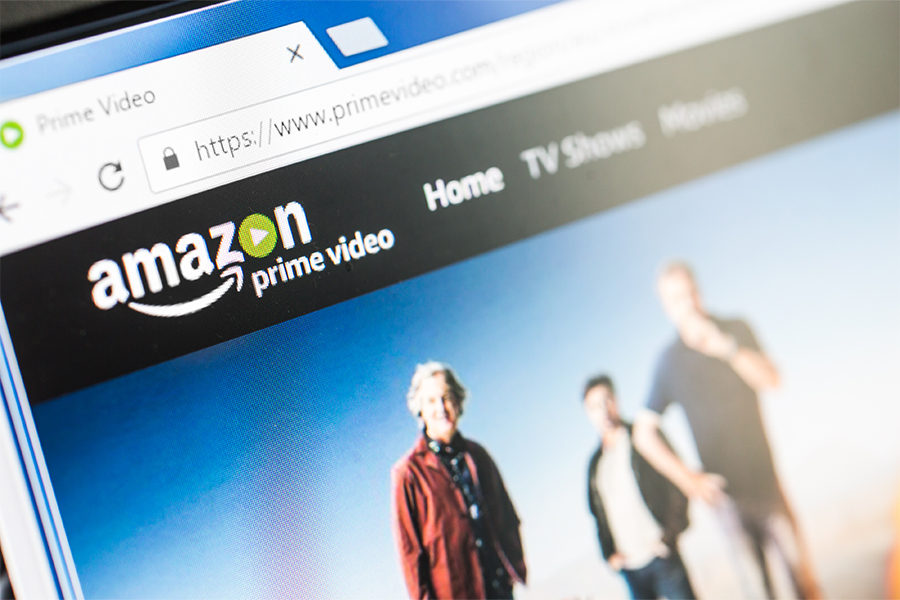Resources - Blog
Ad-Supported Streaming Wars: How to Get Ahead

The allure of cashing in on streaming TV has reached unprecedented heights, fueled by the surge in ad-supported models offered by major players like Amazon’s Prime Video and Netflix. According to a June 2023 Antenna report, a whopping one-fourth of streaming sign-ups in the first half of 2023 embraced ad-supported models, marking a significant jump from the one-fifth recorded in 2021.
However, this surge in ad-supported streaming has ignited fierce competition, challenging brands and retailers to stay at the forefront of the streaming wars. To navigate this landscape successfully, we’ve distilled key strategies that can give brands the competitive edge they need.
The State of Streaming TV
It’s no secret that streaming has seen explosive growth in recent years. The summer saw a historic change in TV viewing patterns, with streaming TV climbing to a record high of 38.7% while linear TV fell below 50% for the first time.
Even more intriguing is that the combined viewership from both streaming and traditional linear platforms surpasses last year’s exclusive reliance on linear viewership. This suggests a growth in the overall viewer count, thanks to the influx of a fresh audience into the television realm – namely, Gen Z or the cord-nevers, in contrast to the diminishing presence of the baby boomer community.
E-commerce is a dominant force, with retail claiming the lion’s share of ad spending, and streaming TV emerging as a significant component. Amazon has experienced substantial growth in advertising, fueled by platforms like Twitch, Freevee, and Amazon Prime. Q4 reports reveal a remarkable 27% year-over-year increase in advertising revenue. Walmart is also leveraging the potential of streaming TV, having partnered with Innovid for personalized TV ads and Roku for “shoppable ads” enabling direct purchases from TVs. In a strategic move, Walmart is now set to acquire TV manufacturer Vizio in a deal valued at around $2.3 billion.
How to Get Ahead
Streaming TV opens up fresh possibilities for businesses of all sizes to enhance their brand. While traditional linear TV has traditionally been the domain of large brands, often necessitating a substantial minimum spend or upfront commitment for campaigns, streaming offers a more accessible path. It presents fewer obstacles, enabling those with smaller budgets to deploy flexible and cost-effective strategies.
A bigger playing field brings more opportunities, but it also sparks increased competition. With everyone aiming to capitalize on the streaming trend and reach a burgeoning audience, staying ahead requires brands to consider the following.
Understand the Nuances of Streaming
A desktop advertisement essentially remains fixed on the desktop landscape. However, video ads operate quite differently. Some videos allow skipping, while others don’t; certain video ads target specific locations, while others are more limited in their targeting ability. Video inventory spans various channels, including mobile, streaming, and more.
To effectively navigate this landscape, brands must cover all of their bases by serving ads across all these platforms. Relying on a single video type won’t suffice – diversification is key.
With this in mind, committing to video advertising demands a more substantial investment. Exploring every available option is crucial rather than settling for one type of video. Whether online video or streaming TV, brands can’t afford to be selective.
If budget constraints hinder your ability to cover different platforms, wait until you can make a more substantial commitment.
Understand the New Path to Purchase
Running streaming TV ads necessitates ad management beyond metrics like ROAS, ACOS, or TACOS. These metrics primarily cater to performance-oriented channels and fail to provide insights into the dynamics of the DSP. Instead, shift your focus towards analyzing the path to purchase.
According to Jeffrey Cohen, Principal Evangelist, Advertising API at Amazon, “Signals from path-to-purchase analysis indicate that consumers ebb and flow out of each of the phases and may skip some all together. If we can agree that this path is no longer linear, then why do we continue to talk about the purchase funnel? It’s time to evolve our terminology.”
The path to purchase is exactly as it sounds – it analyzes how customers reach the buying stage, considering the various routes each customer takes rather than assuming a uniform approach. It examines all the instances in a customer’s journey to purchase, beginning with the DSP video ad.
For example, a customer might engage with a DSP video ad, followed by a DSP product display ad, then a retargeting ad, and finally, a sponsored brand ad. Simply put, it examines each interaction point to determine the occurrence of specific paths leading to a purchase. This approach allows you to understand how frequently certain paths are taken, compare their occurrences, and strategize on promoting one path over another.
By focusing on the path to purchase rather than solely relying on performance-oriented metrics, you gain insights into the impact of each touchpoint. This nuanced approach goes beyond the basic bottom-line metrics, providing a clearer understanding of the DSP’s role in shaping your customer’s journey.
Leverage the Latest Tools
Brands would be remiss not to leverage the wealth of technology available to enhance their streaming approach. For instance, Amazon has enhanced its advertising suite with various capabilities, ranging from strategic campaign planning to a more thorough measurement approach. The Amazon Marketing Cloud, in particular, stands out for its ability to measure the path to purchase, helping to understand the modern and fragmented customer journey.
Another way to boost your streaming strategy is by teaming up with a trusted tech partner familiar with the intricacies of Amazon’s advertising landscape. Gain valuable insights on spending benchmarks, anticipated performance, and distinctions between streaming TV, Sponsored Brands, and beyond. Look for a partner equipped with enhanced reporting capabilities since TV’s measurability differs, requiring a wealth of data-driven insights.
Final Thoughts
As the streaming wars intensify, understanding the nuances of video advertising, embracing the non-linear path to purchase, and leveraging the latest tools are crucial steps to gaining a competitive edge. With streaming TV opening up new possibilities for businesses of all sizes, the key lies in adapting strategies to this changing ecosystem. The future of streaming is dynamic, and those who embrace innovation and strategic flexibility are poised to emerge as leaders in this compelling and competitive landscape.
Boost your presence on e-marketplaces like Amazon with a cutting-edge streaming strategy fueled by Feedvisor’s AI-first advertising platform — see it for yourself with a free, 14-day trial.

